Complete Guide to Chain Slings & Hooks
- By Hanes Supply
- Nov 17, 2025
- 0 Comments
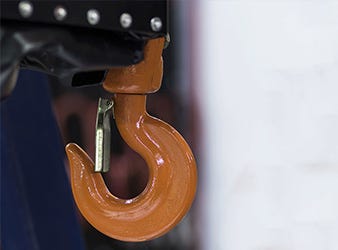
Chain slings and hooks are fundamental components in the lifting and rigging industry. Renowned for their strength, durability, and versatility, they are indispensable across various sectors, including construction, manufacturing, shipping, and more. This comprehensive guide delves into the intricacies of chain slings and rigging hooks, detailing their types, applications, safety considerations, and maintenance practices.
Understanding Chain Slings
Chain slings are assemblies of high-strength chains and fittings designed to lift and move heavy loads. Their robust construction makes them ideal for demanding environments and applications where flexibility and resilience are paramount.
Types of Chain Slings
Chain slings are categorized based on their configuration and the number of legs:
Single-Leg Chain Slings
Single leg chain slings consist of a single chain leg with fittings at both ends, and it is suitable for straightforward, vertical lifts.
Double-Leg Chain Slings
Double leg chain slings feature two chain legs attached to a master link, providing enhanced stability for lifting balanced loads.
Triple and Quad-Leg Chain Slings
Utilizing three or four chain legs connected to a master link, they are ideal for handling large, bulky, or irregularly shaped loads that require balanced lifting points.
Each configuration offers unique advantages, and the selection depends on the specific requirements of the lifting task.
Grades of Chain
The performance of a chain sling is significantly influenced by the grade of the chain used. The most common grades suitable for lifting applications are:
• Grade 80: A high-strength, heat-treated alloy steel chain suitable for overhead lifting.
• Grade 100: Offers approximately 25% higher working load limits than Grade 80, making it ideal for more demanding lifting tasks.
• Grade 120: Provides even greater strength and is used in specialized lifting applications.
Selecting the appropriate chain grade is crucial to ensure safety and efficiency in lifting operations.
Exploring Rigging Hooks
Rigging hooks are the connecting components that attach the chain sling to the load or lifting device. They come in various designs, each tailored to specific applications and load requirements.
Common Types of Rigging Hooks Used with Chain Slings
Eye Hooks
This hook type features a solid loop (eye) at the top, allowing for a permanent connection to the chain or sling. Eye hooks offer flexibility in positioning but require disassembly to remove.
Clevis Hooks
Equipped with a U-shaped attachment point secured by a pin, clevis hooks enable easy attachment and detachment. They are commonly used for applications requiring frequent hook changes.
Swivel Hooks
Swivel hooks incorporate a swivel mechanism, which allows the hook (and the load) to rotate and prevents the sling from twisting during lifting.
Grab Hooks
Designed with a narrow throat to "grab" onto a chain link, facilitating the shortening or adjusting of chain length without additional hardware.
Slip Hooks
Slip hooks feature a wider throat, allowing chains or other attachments to slip through. They are often used in towing or pulling applications.
Self-Locking Hooks
Self locking hooks automatically close and lock under load, providing enhanced safety by preventing accidental unhooking.
Understanding the specific functions of each hook type is essential for selecting the right component for your lifting needs.
Applications of Chain Slings and Hooks
The versatility of chain slings and hooks makes them suitable for a wide range of applications:
• Construction: Lifting and positioning heavy materials such as steel beams, concrete panels, and prefabricated structures.
• Manufacturing: Handling heavy machinery parts, assembly line components, and raw materials.
• Shipping and Logistics: Loading and unloading cargo, securing loads during transport, and material handling in warehouses.
• Mining and Energy: Hoisting equipment, tools, and extracted materials in mines and oil rigs.
• Forestry: Lifting and transporting logs and forestry equipment.
Their robustness and adaptability make chain slings and hooks indispensable in environments where safety and efficiency are critical.
Safety Considerations
Ensuring safety during lifting operations is paramount. Adhere to the following guidelines when using chain slings and hooks:
- Regular Inspections: Before each use, inspect slings and hooks for signs of wear, deformation, cracks, or corrosion. Remove any defective components from service immediately.
- Load Limits: Always check the Working Load Limit (WLL) of the sling and hooks to ensure they are appropriate for the load being lifted. Never exceed the manufacturer's specified load limits.
- Proper Hook Orientation: Ensure hooks are positioned correctly, with the latch facing outward, to prevent unintentional disengagement.
- Avoid Side Loading: Apply loads only in the direction for which the sling and hook are designed. Side loading can lead to bending or failure of the components.
- Training and Certification: Ensure that all personnel involved in rigging and lifting operations are properly trained and certified, understanding the correct use and limitations of chain slings and hooks.
Adhering to these safety practices helps prevent accidents and prolongs the service life of your lifting equipment.
Maintenance Practices
Proper maintenance of chain slings and hooks is essential to ensure their longevity and reliability:
• Cleaning: Regularly clean slings and hooks to remove dirt, grease, and other contaminants that could cause corrosion or wear.
• Lubrication: Apply appropriate lubricants to moving parts, such as swivel hooks, to ensure smooth operation and prevent rust.
• Storage: Store slings and hooks in a dry, cool place away from direct sunlight and chemicals that could cause degradation.
• Repair and Replacement: Promptly repair or replace any damaged components. Only qualified personnel should perform repairs using manufacturer-approved parts.
Chain Slings: Indispensable Tools in Rigging Operations
Chain slings and rigging hooks are indispensable tools in lifting and rigging operations, offering unparalleled strength, durability, and versatility across a multitude of operations. You can ensure efficient and secure lifting applications by understanding the different types of chain slings, selecting the appropriate rigging hooks, and adhering to proper safety protocols. Regular inspections, correct maintenance, and adherence to load limits are crucial for extending the lifespan of your equipment and preventing workplace accidents.
At HSI, we are committed to providing high-quality chain slings and rigging hooks that meet industry standards, ensuring reliability and safety in every lift. Our extensive inventory covers you whether you need single-leg, multi-leg slings, or custom slings for your specific application. Contact us today to find the best rigging solutions tailored to your needs and experience the confidence of lifting with top-tier equipment or call us at 1.888.426.3755.






































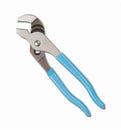 Channellock® 426 Tongue and Groove Plier, 7/8 in Nominal, 3/4 in L C1080 High Carbon Steel Straight Jaw, 6-1/2 in OAL
Channellock® 426 Tongue and Groove Plier, 7/8 in Nominal, 3/4 in L C1080 High Carbon Steel Straight Jaw, 6-1/2 in OAL
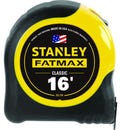 Stanley® 33-716 FatMax® Reinforced Tape Rule with BladeArmor®, 16 ft L x 1-1/4 in W Blade, Mylar® Polyester Film Blade
Stanley® 33-716 FatMax® Reinforced Tape Rule with BladeArmor®, 16 ft L x 1-1/4 in W Blade, Mylar® Polyester Film Blade
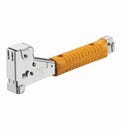 Arrow™ HT50 Professional Heavy Duty Tomahawk Hammer Tacker, Flat Crown Staple
Arrow™ HT50 Professional Heavy Duty Tomahawk Hammer Tacker, Flat Crown Staple
 Klein® D2000-9ST 2000 Heavy Duty Rebar Work Cutting Plier, 9-3/8 in OAL
Klein® D2000-9ST 2000 Heavy Duty Rebar Work Cutting Plier, 9-3/8 in OAL
 Estwing® E324S Framing Hammer, 16 in OAL, Smooth Surface, 24 oz Steel Head, Straight Claw, Steel Handle
Estwing® E324S Framing Hammer, 16 in OAL, Smooth Surface, 24 oz Steel Head, Straight Claw, Steel Handle
 DeWALT® Power-Stud®+ Powers® 7449SD1-PWR Expansion Wedge Anchor, 3/4 in dia, 10 in OAL, 7-1/2 in L Thread, Carbon Steel, Zinc Plated
DeWALT® Power-Stud®+ Powers® 7449SD1-PWR Expansion Wedge Anchor, 3/4 in dia, 10 in OAL, 7-1/2 in L Thread, Carbon Steel, Zinc Plated
 BBI® 777037 All Threaded Rod, 3/8-16, 12 ft OAL, Steel Alloy
BBI® 777037 All Threaded Rod, 3/8-16, 12 ft OAL, Steel Alloy
 BBI® 754072 Medium Split Lock Washer, 1/2 in Nominal, 18-8 SS
BBI® 754072 Medium Split Lock Washer, 1/2 in Nominal, 18-8 SS
 Primesource® 8CTDSKR Sinker Nail, 17/64 in, 2-3/8 in L, 9 ga, Vinyl Coated, Smooth Shank
Primesource® 8CTDSKR Sinker Nail, 17/64 in, 2-3/8 in L, 9 ga, Vinyl Coated, Smooth Shank
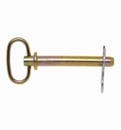 Campbell® T3899724 Hitch Pin, 1/2 in dia, 4-1/4 in L Usable, Forged Steel, Zinc Plated with Yellow Chromate, 5 Grade
Campbell® T3899724 Hitch Pin, 1/2 in dia, 4-1/4 in L Usable, Forged Steel, Zinc Plated with Yellow Chromate, 5 Grade

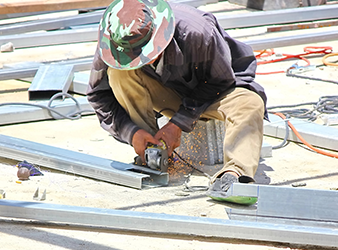

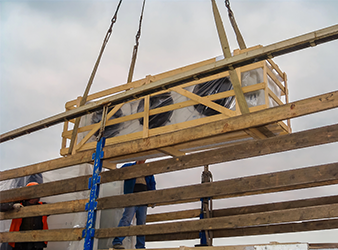
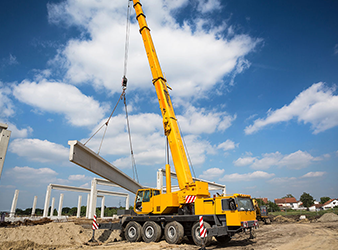

Comments (0)